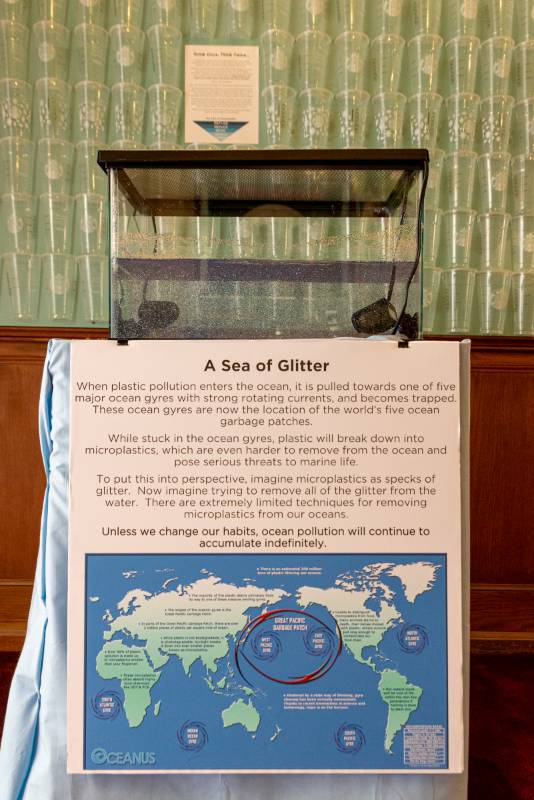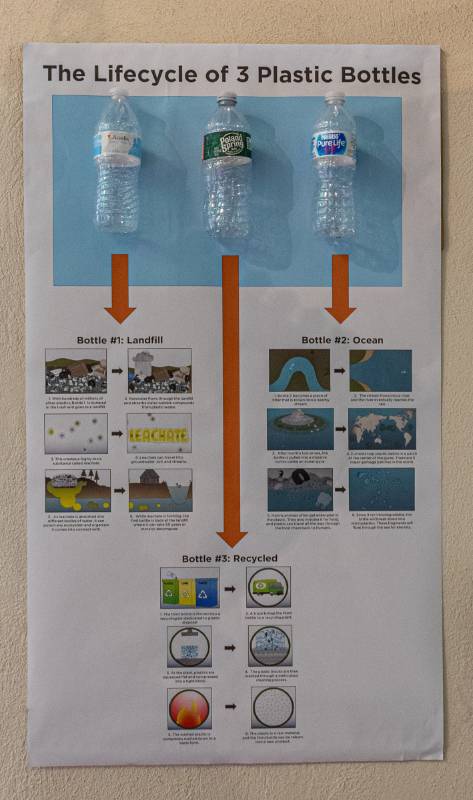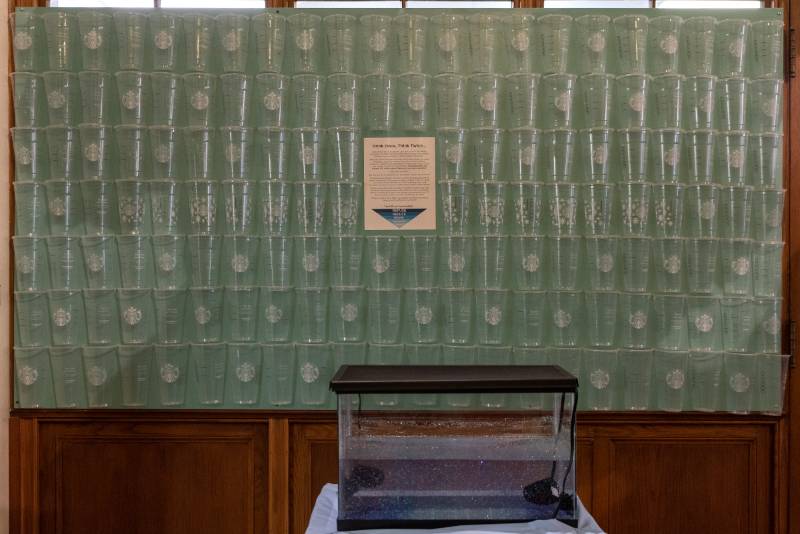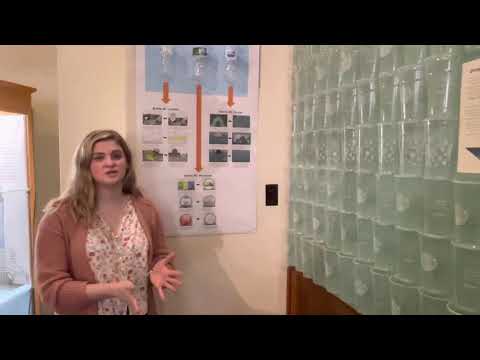The Problem with Plastic
Drink Once, Think Twice…
Look at this wall of Starbucks cups. Each cup in the display represents 144,000 cups that will be thrown away from college students every semester at West Chester University!
Starbucks distributes approximately 600 million single-use paper and plastic cups and straws every year. At West Chester University, students are responsible for consuming around 3,000 cups a week. Across the United States, college students use roughly 14.5 million plastic Starbucks cups every semester.
That’s a lot of plastic!
But why are we so dependent on disposable, single-use products?
The fast-paced Western lifestyle is an ideal breeding ground for plastic production. The single-use plastic market in the U.S. alone was valued at $34.29 billion in 2019! Packaging, food, and beverage industries are some of the largest culprits in this market.
Plastic waste often ends up sitting in landfills, where it can take over fifty years to decompose! Recycling is a more sustainable option, however it is a time- and energy-consuming process. It’s best to refuse single-use plastic and bring your own!
When you drink once, think twice about the single-use plastic industry and its effects on our Earth!
A Sea of Glitter
When plastic pollution enters the ocean, it is pulled towards one of five major ocean gyres with strong rotating currents, and becomes trapped. These ocean gyres are now the location of the world’s five ocean garbage patches.
While stuck in the ocean gyres, plastic will break down into microplastics, which are even harder to remove from the ocean and pose serious threats to marine life.
To put this into perspective, imagine microplastics as specks of glitter. Now imagine trying to remove all of the glitter from the water. There are extremely limited techniques for removing microplastics from our oceans.
Unless we change our habits, ocean pollution will continue to accumulate indefinitely.
Curated by Megan Gunzelman.





